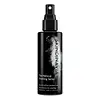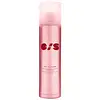Skindinavia The Makeup Finishing Spray Versus One/Size by Patrick Starrr On 'Til Dawn Mattifying Waterproof Setting Spray
What's inside
What's inside
 Key Ingredients
Key Ingredients

 Benefits
Benefits

 Concerns
Concerns

 Ingredients Side-by-side
Ingredients Side-by-side

Water
Skin ConditioningSd Alcohol 39
AstringentPolyhydroxystearic Acid
EmulsifyingIsononyl Isononanoate
EmollientEthylhexyl Isononanoate
EmollientSodium Cocamidopropyl Pg-Dimonium Chloride Phosphate
CleansingMethyl Perfluorobutyl Ether
SolventMethyl Perfluoroisobutyl Ether
SolventPvp
Emulsion StabilisingPhenoxyethanol
PreservativeCaprylyl Glycol
EmollientGluconolactone
Skin ConditioningSodium Benzoate
MaskingDimethicone PEG-7 Phosphate
CleansingPPG-3 Benzyl Ether Myristate
EmollientMethyl Methacrylate Crosspolymer
Glycereth-5 Lactate
EmollientParfum
Masking5-Isopropyl-2-Methylanisole
PerfumingAloe Barbadensis Leaf Juice
Skin ConditioningSodium Hydroxide
BufferingWater, Sd Alcohol 39, Polyhydroxystearic Acid, Isononyl Isononanoate, Ethylhexyl Isononanoate, Sodium Cocamidopropyl Pg-Dimonium Chloride Phosphate, Methyl Perfluorobutyl Ether, Methyl Perfluoroisobutyl Ether, Pvp, Phenoxyethanol, Caprylyl Glycol, Gluconolactone, Sodium Benzoate, Dimethicone PEG-7 Phosphate, PPG-3 Benzyl Ether Myristate, Methyl Methacrylate Crosspolymer, Glycereth-5 Lactate, Parfum, 5-Isopropyl-2-Methylanisole, Aloe Barbadensis Leaf Juice, Sodium Hydroxide
Butane
Alcohol Denat.
AntimicrobialIsobutane
Diisopropyl Adipate
EmollientMagnesium Carbonate
AbsorbentAlcohol
AntimicrobialMethacryloyl Ethyl Betaine/Acrylates Copolymer
Water
Skin ConditioningParfum
MaskingHamamelis Virginiana Water
AstringentAloe Barbadensis Leaf Juice
Skin ConditioningPanthenol
Skin ConditioningCamellia Sinensis Leaf Extract
AntimicrobialTocopheryl Acetate
AntioxidantGlycerin
HumectantPhenoxyethanol
PreservativeCucumis Sativus Fruit Extract
EmollientBenzoic Acid
MaskingLimonene
PerfumingLinalool
PerfumingHexyl Cinnamal
PerfumingButane, Alcohol Denat., Isobutane, Diisopropyl Adipate, Magnesium Carbonate, Alcohol, Methacryloyl Ethyl Betaine/Acrylates Copolymer, Water, Parfum, Hamamelis Virginiana Water, Aloe Barbadensis Leaf Juice, Panthenol, Camellia Sinensis Leaf Extract, Tocopheryl Acetate, Glycerin, Phenoxyethanol, Cucumis Sativus Fruit Extract, Benzoic Acid, Limonene, Linalool, Hexyl Cinnamal
 Reviews
Reviews

Ingredients Explained
These ingredients are found in both products.
Ingredients higher up in an ingredient list are typically present in a larger amount.
Aloe Barbadensis Leaf Juice comes from leaves of the aloe plant. Aloe Barbadensis Leaf Juice is best known for helping to soothe sunburns. It is also anti-inflammatory, moisturizing, antiseptic, and can help heal wounds.
Aloe is packed with good stuff including Vitamins A, C, and E. These vitamins are antioxidants, which help fight free-radicals and the damage they may cause. Free-radicals are molecules that may damage your skin cells, such as pollution.
Aloe Barbadensis Leaf Juice also contains sugars. These sugars come in the form of monosaccharides and polysaccharides, folic acid, and choline. These sugars are able to help bind moisture to skin.
It also contains minerals such as calcium, 12 anthraquinones, fatty acids, amino acids, and Vitamin B12.
Learn more about Aloe Barbadensis Leaf JuiceParfum is a catch-all term for an ingredient or more that is used to give a scent to products.
Also called "fragrance", this ingredient can be a blend of hundreds of chemicals or plant oils. This means every product with "fragrance" or "parfum" in the ingredients list is a different mixture.
For instance, Habanolide is a proprietary trade name for a specific aroma chemical. When used as a fragrance ingredient in cosmetics, most aroma chemicals fall under the broad labeling category of “FRAGRANCE” or “PARFUM” according to EU and US regulations.
The term 'parfum' or 'fragrance' is not regulated in many countries. In many cases, it is up to the brand to define this term.
For instance, many brands choose to label themselves as "fragrance-free" because they are not using synthetic fragrances. However, their products may still contain ingredients such as essential oils that are considered a fragrance by INCI standards.
One example is Calendula flower extract. Calendula is an essential oil that still imparts a scent or 'fragrance'.
Depending on the blend, the ingredients in the mixture can cause allergies and sensitivities on the skin. Some ingredients that are known EU allergens include linalool and citronellol.
Parfum can also be used to mask or cover an unpleasant scent.
The bottom line is: not all fragrances/parfum/ingredients are created equally. If you are worried about fragrances, we recommend taking a closer look at an ingredient. And of course, we always recommend speaking with a professional.
Learn more about ParfumPhenoxyethanol is a preservative that has germicide, antimicrobial, and aromatic properties. Studies show that phenoxyethanol can prevent microbial growth. By itself, it has a scent that is similar to that of a rose.
It's often used in formulations along with Caprylyl Glycol to preserve the shelf life of products.
Water. It's the most common cosmetic ingredient of all. You'll usually see it at the top of ingredient lists, meaning that it makes up the largest part of the product.
So why is it so popular? Water most often acts as a solvent - this means that it helps dissolve other ingredients into the formulation.
You'll also recognize water as that liquid we all need to stay alive. If you see this, drink a glass of water. Stay hydrated!
Learn more about Water